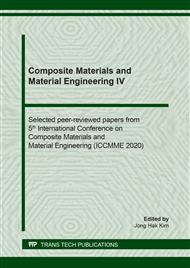p.114
p.120
p.129
p.135
p.141
p.149
p.155
p.161
p.167
Analytical Methods for the Synthesis of Composites
Abstract:
The evolution of ideas about materials is analyzed: the initial accumulation of data, experience and skills in the production of new material (the emergence of new technology); identification of patterns of influence of various factors on the properties of the material with the involvement of fundamental sciences (the formation of a new technology); obtaining building material with a given level of quality (development of an effective technology ); identification of the technological process and the construction of an adequate model of “recipe-technological factors - structure - quality of the material”. In models of structural material science, the existence of certain hierarchical structures of objects considered as systems is assumed; model selection is determined by the objectives of the structural description of the object at each scale level. The shift of paradigms based on the basic models of a continuous self-developing environment to the side of paradigms based on models of a structured self-developing environment based on the ideas and methods of a systematic approach and synergetics is indicated. The approaches to the fundamentalization of the synthesis of materials based on their own experience in designing materials for special purposes are presented: the presentation of the material in the form of a complex system (at first - poorly structured with conflicting goals and criteria); quality assessment of composite materials; formalization of kinetic processes; material quality management; minimization of dimension of criterion space; multi-criteria optimization.
Info:
Periodical:
Pages:
167-172
Citation:
Online since:
June 2020
Authors:
Price:
Сopyright:
© 2020 Trans Tech Publications Ltd. All Rights Reserved
Share:
Citation:


